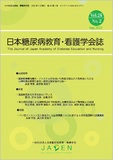Japanese
English
- 販売していません
- Abstract 文献概要
- 参考文献 Reference
- サイト内被引用 Cited by
目的:糖尿病患者は生活全体のバランスをどのように取っているのかを明らかにすることである.
方法:血糖コントロールが良好な6名の糖尿病患者に対して普段の生活について半構成的なインタビューを行い,インタビューで得られた内容を質的統合法(KJ法)を用いて分析を行った.
結果:生活全体のバランスは【バランスの崩れの整え】【バランスの偏りの整え】【取捨選択によるバランスの維持】【両立によるバランスの維持】【バランスの崩れの予防】【バランスの偏りの予防】【超越的なバランス】の7つのあり様が明らかになった.それらが補完し合いながら生活全体のバランスを保っていることが明らかになった.
結論:糖尿病患者は,生活の中で状況に応じて柔軟に対応しつつ,病気の管理に限らず睡眠や感情などを含めた生活全体のバランスを取っていた.本研究の結果は,患者の価値観や生活習慣,生活状況などの個別性を重視した糖尿病患者教育の提供に貢献出来ると考える.
Aim:The purpose of this study was to clarify how patients with diabetes achieve an overall balance in their lives.
Method:The study sample comprised six patients with diabetes who maintained a reasonable control of the blood glucose level. Data were collected through semi-structured interviews focusing on the patients' daily lives, conducted by a researcher. Next, the KJ method, a qualitative data synthesis method, was used to analyze the balancing of life structure among the patients.
Results:The balance of life structure consisted of seven balances:“Remedy after being out of balance,” “remedy for balance deviation,” “balance maintenance by priority action,” “balance maintenance by compatible activities,” “out-of-balance prevention,” “deflection of balance prevention,” and “transcendent balance.” These seven balances complement each other and contribute to the ability to maintain an overall balance in life.
Conclusion:Patients with diabetes responded flexibly to the situation in their daily lives and exhibited balance in their overall lives, including not only balance in illness management but also balance in sleep and emotions. The results of this study can be considered useful for providing patient education that takes into consideration the individuality of patients, such as their values, lifestyles, and living conditions.
Copyright © 2022, Japan Academy of Diabetes Education and Nursing. All rights reserved.


